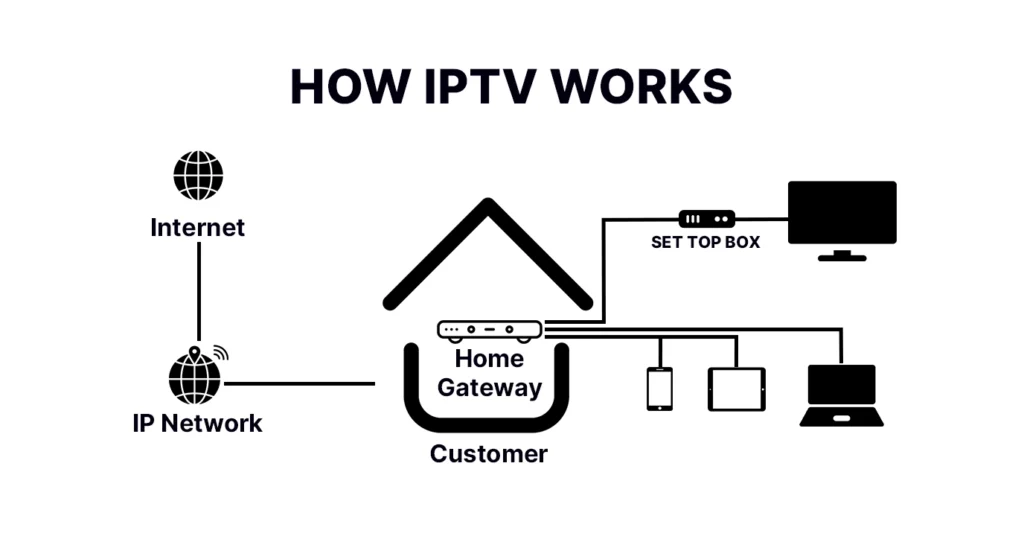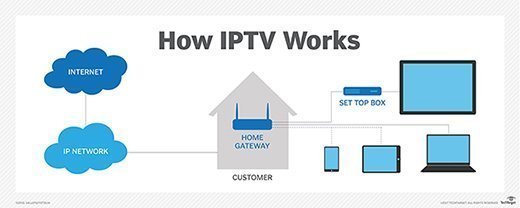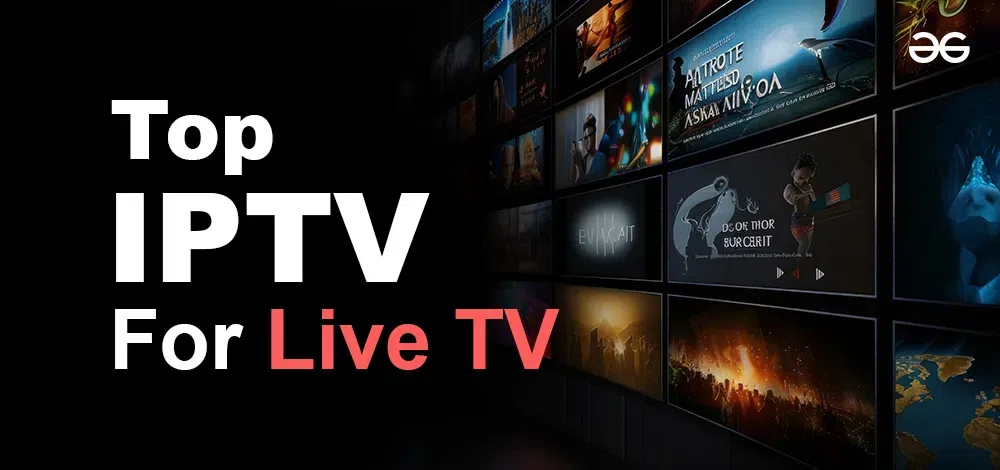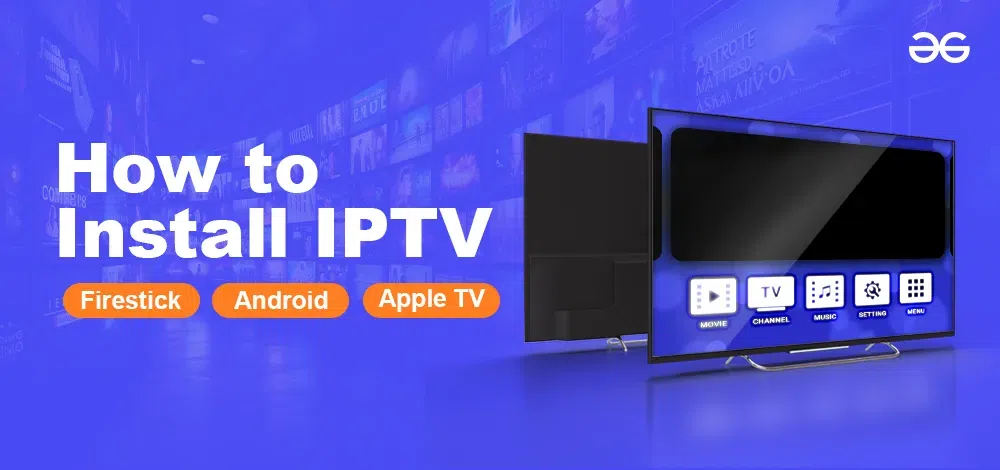
Introduction to IPTV
Internet Protocol Television (IPTV) represents a transformative approach to television delivery, allowing viewers to consume media content over the Internet rather than through traditional broadcasting systems such as cable or satellite. This innovative technology enables the distribution of live television programs, on-demand content, and video conferencing services via IP networks, providing flexibility and convenience for users. With the rapid expansion of broadband infrastructure, IPTV has emerged as a formidable alternative to conventional television viewing methods.Understanding IPTV.
The significance of IPTV in the modern media landscape is underscored by its ability to cater to diverse consumer preferences. Unlike traditional cable services, which often require subscribers to pay for bundles that include channels they may not watch, IPTV service providers typically offer customizable subscription plans. This flexibility enables users to select specific content that aligns with their viewing habits and interests, promoting a more personalized viewing experience.
Additionally, IPTV facilitates advanced features such as time-shifting, which allows viewers to record and watch their favorite shows at a later time, and catch-up TV, giving users the ability to view content that aired previously. These functionalities enhance user engagement and satisfaction. In contrast, cable television often lacks such flexibility, leaving viewers constrained by rigid scheduling constraints inherent in traditional broadcasting methods.
Moreover, as viewers increasingly gravitate towards streaming platforms, the shift from cable to IPTV is becoming more pronounced. The competitive landscape of IPTV streaming vs. cable heightens the need for services to deliver high-quality content with minimal buffering and delays, which significantly enriches the viewer’s experience. Thus, IPTV is not merely a trend; it signifies a paradigm shift in how media is consumed in the digital age.
How IPTV Works
IPTV, or Internet Protocol Television, delivers television content using Internet Protocol technology, enabling the transmission of video data over an IP network instead of traditional terrestrial, satellite, or cable formats. This modern method of content delivery hinges on a variety of technical components that work cohesively to ensure a seamless viewing experience for users.

The process begins with the encoding of video signals into a format suitable for internet transmission. This is where codecs come into play. Codecs compress and decompress digital video, significantly reducing file sizes while maintaining quality, which is critical for efficient streaming. Numerous codecs exist, each optimized for different streaming requirements and devices, highlighting the diverse options available to IPTV service providers.
Once encoded, video content is transmitted using specific protocols. These protocols govern how data is sent, ensuring reliable delivery even in the face of varying network conditions. For example, the Real-Time Streaming Protocol (RTSP) and Real-time Transport Protocol (RTP) are commonly utilized in IPTV systems to facilitate real-time transmission of media. Such protocols enable smooth playback, reducing buffering and enhancing the viewer’s experience.
It is essential to recognize the role of streaming techniques in IPTV as well. Techniques such as adaptive bitrate streaming allow content to adjust its quality based on users’ available bandwidth and internet speed. This is particularly vital given the varying levels of infrastructure across different regions, ultimately ensuring that viewers receive the best possible experience. Furthermore, bandwidth plays a critical role in the efficacy of IPTV delivery; inadequate bandwidth can lead to degraded video quality, intermittent buffering, and a frustrating viewing experience.
Overall, the intricate processes of encoding, transmitting, and streaming, combined with the inescapable significance of bandwidth and internet speed, form the backbone of IPTV, fundamentally changing how audiences consume video content today.
IPTV vs. Traditional Television
In recent years, the advent of Internet Protocol Television (IPTV) has transformed the landscape of television viewing. As a result, it is essential to compare IPTV service providers with traditional television services, to understand how they differ in terms of delivery methods, content availability, interactivity, and user experience.
Traditional television, which includes cable and satellite services, relies on broadcasting signals through physical infrastructure. This often necessitates a set-top box and is typically bound by regional availability. Conversely, IPTV utilizes internet connectivity to deliver content directly to users over a broadband network. This means that IPTV is more flexible, allowing viewers to access their favorite programs whenever and wherever they choose, as long as they have internet access. The requirement for an IPTV subscription plan provides consumers with various options tailored to their preferences, offering a level of customization that traditional cable services often lack.
Moreover, content availability differs significantly between the two formats. Traditional television tends to offer a fixed channel lineup, while IPTV service providers frequently furnish a broader range of on-demand content. This means that users can choose from a diverse library that includes not only live broadcasts but also movies, series, and exclusive shows. Additionally, many IPTV platforms offer the capability to pause, rewind, and record live television, enhancing the user experience through interactivity that traditional television cannot match.
Despite these advantages, traditional television may still have its proponents, especially for those who prefer established formats that do not rely on internet stability. Cable services also tend to provide comprehensive local news and sports coverage, which can be vital for certain audiences. Thus, while IPTV offers numerous benefits such as flexibility and content diversity, each format possesses unique characteristics that cater to different viewer needs. Ultimately, the choice between IPTV streaming and cable will depend on individual preferences regarding content access and viewing habits.
Types of IPTV Services
IPTV, or Internet Protocol Television, has transformed the way audiences consume content, providing a range of services tailored to various preferences and needs. The primary categories of IPTV services include live television, video-on-demand (VOD), and time-shifted TV, each offering unique benefits and catering to different demographics.
Live television services deliver real-time content over the Internet. Viewers can access a plethora of channels that replicate traditional television experiences, allowing for seamless streaming of live events, news broadcasts, and diverse programming. Popular among sports enthusiasts and those who enjoy live shows, many IPTV service providers offer packages that closely align with conventional cable options, making it easier for users to transition without sacrificing live content.
Video on demand (VOD) is another prominent category. This service allows users to select and watch content at their convenience, including movies, series, and documentaries. With numerous IPTV subscription plans available, VOD caters to audiences seeking flexibility over strict viewing schedules. Services like Netflix and Hulu have popularized this model, inspiring traditional IPTV providers to integrate on-demand viewing into their offerings.
Lastly, time-shifted TV enables viewers to watch previously aired programs at a later time. This feature is particularly advantageous for those who cannot watch their favorite shows in real-time, providing a user-friendly experience by allowing catch-up viewing. Many IPTV service providers include this option as part of their subscription packages, appealing to busy individuals and families alike.
Overall, the diverse categories of IPTV services suggest a robust market capable of meeting an array of consumer preferences, making it a compelling alternative to conventional cable television.
The Role of Middleware in IPTV
In the context of IPTV, middleware plays a vital role as the intermediary layer that connects the content delivery system with the end-user devices. It acts as the backbone of the IPTV ecosystem, facilitating various functions that enhance the viewer’s experience. Middleware is responsible for managing user interfaces, enabling seamless navigation through channels and on-demand content, and ensuring a user-friendly experience across diverse devices.
Another critical function that middleware provides is the management of the billing process for IPTV subscription plans. It handles account creation, subscription renewals, and payment processing, promoting a streamlined experience for users. This allows IPTV service providers to efficiently track subscriptions and manage customer accounts, ensuring accurate billing and service delivery.
Content organization is another essential aspect of middleware. It helps in cataloging and structuring content in a manner that is easily accessible to users. For instance, middleware can group content based on genres or allow users to create personalized playlists. With the rising competition among IPTV service providers, the efficiency of middleware solutions can significantly influence user satisfaction and retention rates.
Moreover, by facilitating the interoperability of various hardware and software, middleware ensures that the IPTV streaming experience is consistent across different devices, including smart TVs, computers, and mobile phones. This capability is particularly vital in today’s multi-device landscape, where viewers expect a cohesive experience regardless of the platform they choose to use.
In essence, middleware is integral to the successful delivery and management of IPTV services. By effectively bridging the gap between the content delivery mechanisms and user devices, it enhances the viability and attractiveness of IPTV compared to traditional cable options.
IPTV Infrastructure
The infrastructure of Internet Protocol Television (IPTV) plays a vital role in delivering seamless streaming experiences to viewers. This infrastructure can be broken down into several key components: servers, content delivery networks (CDNs), and client devices. Each of these plays an essential role in ensuring that the IPTV service providers can offer a reliable and high-quality viewing experience.

At the core of IPTV infrastructure are the servers, which host and manage the content that subscribers access. These servers need to be robust and capable of handling multiple streams simultaneously, especially during peak viewing hours. They also manage the encoding and compression of video content to ensure efficient transmission over the internet. The efficiency of the server infrastructure directly impacts the overall quality and reliability of the IPTV subscription plans offered to users.
Content Delivery Networks (CDNs) are another critical component in the IPTV ecosystem. CDNs are designed to distribute streaming content efficiently by caching it at various geographical locations to reduce latency and buffering. By utilizing a network of interconnected servers, CDNs enable IPTV service providers to deliver high-definition content quickly and reliably, even when demand is high. This distributed approach not only enhances the user experience but also alleviates strain on central servers during peak periods.
Client devices, which may include televisions, computers, tablets, and smartphones, act as the final link in the IPTV infrastructure chain. These devices require specific software that can decode and present the streamed content to users seamlessly. The compatibility between client devices and IPTV service providers’ offerings is crucial for maintaining viewer satisfaction.
However, managing this intricate infrastructure presents challenges. Network congestion, server overload, and compatibility issues can lead to interruptions in service. Therefore, effective infrastructure management is paramount to ensure a high-quality IPTV streaming experience compared to traditional cable services.
Regulatory and Legal Considerations
The landscape of IPTV service providers is shaped by a complex regulatory framework that varies significantly across different jurisdictions. This framework encompasses multiple aspects, including content licensing, copyright issues, and consumer protection laws. For IPTV service providers, navigating these regulations is crucial to ensure compliance and to avoid potential legal disputes. In many regions, providers must obtain proper licensing agreements for the content they distribute, which might involve negotiations with content owners or networks. Failing to secure these licenses can lead to severe legal repercussions, including fines and the shutdown of services.
Copyright issues are particularly pertinent in the IPTV sector due to the digital nature of content distribution. Unauthorized streaming of copyrighted material can lead to litigation from rights holders. Each country or region has its own copyright laws, and service providers must be well-versed in local regulations to mitigate the risk of infringing upon intellectual property rights. Additionally, some countries have more stringent regulations regarding the distribution of certain channels or programming, which can influence the types of IPTV subscription plans available to consumers.
Consumer protection laws also play an essential role in ensuring that users have access to safe and transparent IPTV services. Regulations typically mandate that providers clearly communicate the details of their service offerings, including subscription costs, content availability, and terms of service. This transparency is vital for building trust with consumers, especially in an industry where some IPTV services operate in a legal gray area.
Geographical variances in regulations can lead to significant implications for both service providers and end-users. Users in regions with more lenient regulations might access a broader array of IPTV options, while others may face limited choices due to stringent compliance requirements. As such, understanding the regulatory environment is crucial for anyone considering the use of an IPTV service.
The Future of IPTV
The future of IPTV is poised for significant transformation, driven by advancements in technology and changing consumer preferences. One of the critical factors that will influence this evolution is the rollout of 5G networks. With 5G technology, IPTV service providers will be able to deliver content with higher bandwidth, reduced latency, and enhanced reliability. This new infrastructure will not only improve the quality of streams but will also allow for a more seamless viewing experience on mobile devices. As consumers increasingly demand flexibility in how they access content, IPTV can meet these needs more effectively than traditional cable systems.
Another area that will shape the trajectory of IPTV is the implementation of artificial intelligence (AI). IPTV service providers can leverage AI algorithms to better understand viewer preferences, habits, and behaviors. Through this data analysis, they can tailor content recommendations that align with individual tastes, offering a more personalized viewing experience. By predicting what users are likely to enjoy, IPTV platforms can enhance user engagement and satisfaction, making them a preferred option over standard cable subscriptions.
Moreover, the future of IPTV will also see an innovative approach to content delivery. As subscription plans evolve, we can expect a greater variety of IPTV subscription plans that cater to various demographic segments and viewing preferences. These plans might include on-demand options, bundled packages with premium channels, or even niche content offerings. The agility in creating diverse subscription models will allow IPTV service providers to capture a broader audience, still focusing on quality and user experience.
As these technological advancements continue to develop, the competitive landscape between IPTV streaming and traditional cable services is likely to intensify, ultimately benefiting consumers who will have more choices and better quality content at their fingertips.
Conclusion
In understanding IPTV (Internet Protocol Television), it becomes clear that this technology offers a significant shift in how media is consumed, which stands in contrast to traditional cable services. IPTV allows users to stream television content over the internet, providing greater flexibility and control, which is increasingly appealing in today’s fast-paced, on-demand culture. As discussed throughout this blog post, various IPTV service providers offer diverse IPTV subscription plans, catering to a wide array of preferences and budgets.
Moreover, the comparison of IPTV streaming vs. cable has highlighted key differences, particularly in terms of convenience, accessibility, and content availability. While cable television typically requires a fixed contract with limited options, IPTV services empower consumers by allowing them to select services that suit their unique viewing habits. This level of customization is becoming pivotal as audiences seek more personalized viewing experiences.
The landscape of digital media consumption is evolving, and IPTV plays a crucial role in this transformation. As personal viewing preferences continue to diverge, IPTV service providers stand to gain traction in the market, appealing to those who value a more tailored approach. Understanding how IPTV functions can enhance your media consumption habits and potentially transform your viewing experience for the better.
As we look towards the future, it is invaluable to recognize the potential growth of IPTV technology and its possibilities for reshaping the entertainment industry. Embracing this modern way of viewing content may not only streamline your media consumption but also align it with the demands of an increasingly digital world. The choice is becoming clear: IPTV is not just a trend but rather an adaptive solution that may redefine how we access television and video content moving forward.



